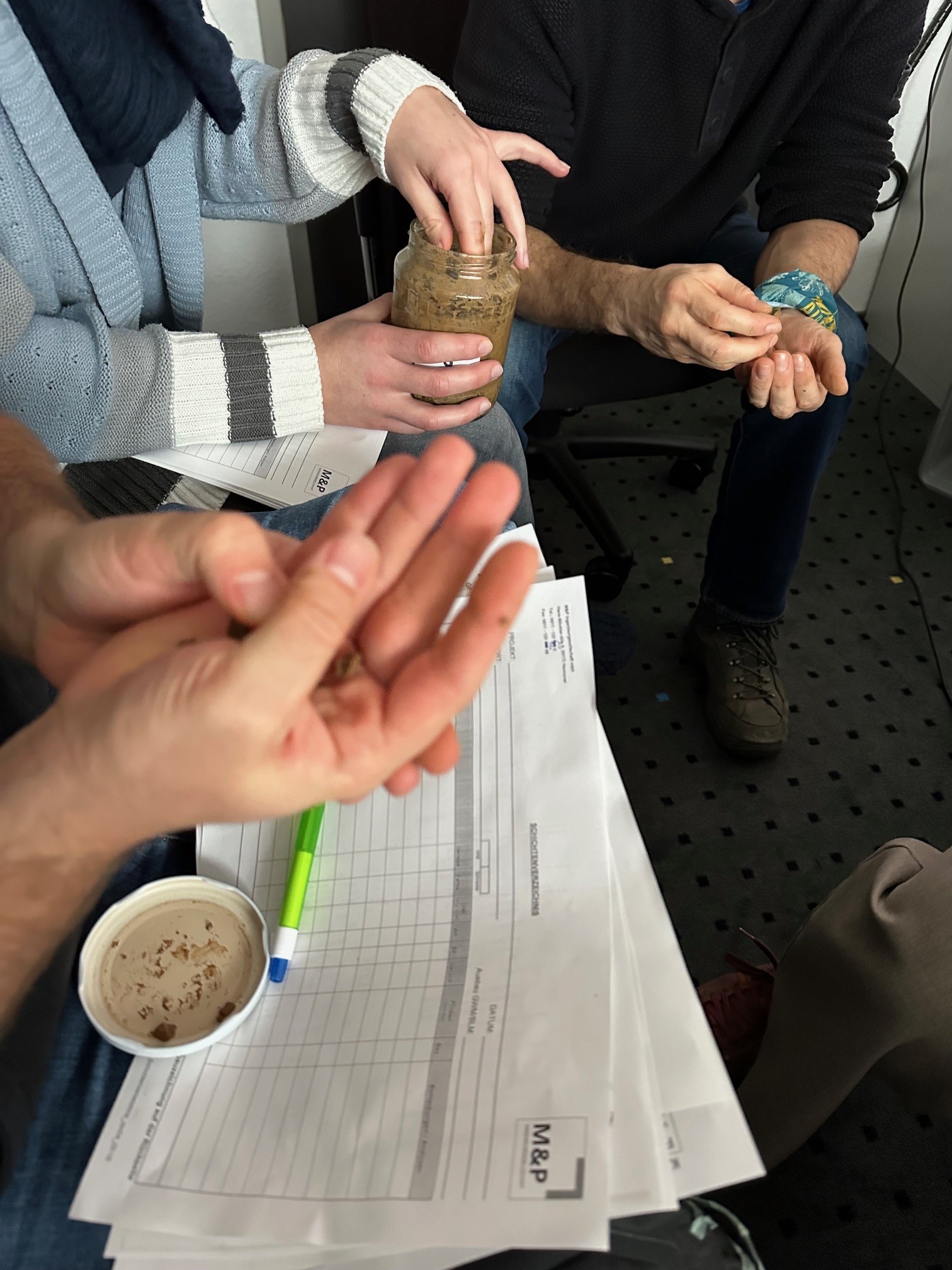At Mull und Partner, continuous employee training is not only provided through external training courses, but also internally.
One factor that unites almost all specialist groups at M&P is the medium of soil and, in particular, its precise grain distribution. The soil is explored as part of drilling work and must then be addressed professionally. Is the material a sand, is it a clay or in what proportions are the grain sizes present in a mixed-grain soil? Only with this knowledge can a proper assessment be made later, e.g. with regard to planned construction projects, remediation or dewatering measures.
Internal training was therefore offered to all interested employees to learn how to recognise what type of soil it is and how to describe it in a standardised way.
In addition to the current guidelines and the correct way to keep layer inventories, they also learnt how to correctly assess the type of soil in the field. If you take a soil sample in your hand, you can determine the grain distribution and also the consistency of cohesive soils based on the visibility of grains, the behaviour when rubbing, the kneadability and the rollability.
In order to practise these methods in practice, everyone was allowed to get their hands dirty once again at the end of the internal training course. Several soil samples were provided for this purpose, which were analysed in advance in the geotechnical laboratory using a sieve and slurry analysis to determine their exact grain distribution. Now everyone was able to test whether they too could correctly assess and describe a soil using the methods presented.


